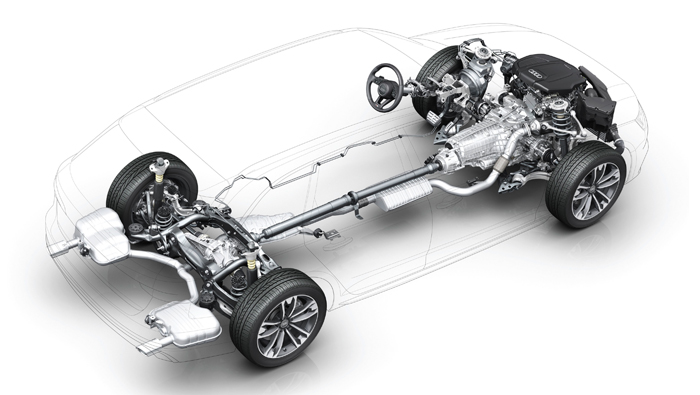
For over 35 years, Quattro, the permanent all-wheel drive system from Audi has been the pinnacle of safety, sportiness and performance for everyday driving. Introduced in 1980 for their rally cars, Audi shifted the technology to its mass production models, following its immense success.
Different brands have drafted various technologies into their vehicles for all-wheel drive, and have worked well but none of them have come close to the Audi’s Quattro. The working of the Quattro maybe impossible to dissect but it does have a certain basic mechanical working. The system makes use of a centre differential for all-wheel drive, instead of employing the generally used traditional transfer box, which is bulky and adds significant weight.
The differential is a component which allows the engine’s torque to be divided between driven wheels even if they are rotating at different speeds.
The Quattro system utilises the Torsen or torque sensing differential, which unlike most of the other systems, allows the engine torque to be directly passed onto the axle with minimum grip in a proactive manner. Ordinarily, two differentials are mounted; one on each driven axle, but quattro employs a third as well, to separate torque between front and rear wheels too.
During a corner or a simple turn, the inner side of the tyres have lesser contact to the surface than the outer side thereby causing the vehicle to skid. Mounted within the gearbox, the central differential connects the two axles when slip is detected, allowing an infinitely variable split of torque depending on the driving conditions. As the car moves into the corner at high speed, the all wheel drive system distributes power providing exact amount of independent traction to each of the four wheels.
Deceleration due to engine braking is also distributed among axles independently as proactive distribution of torque during cornering, making the Audis extremely stable during rapid cornering and evasive manoeuvring.
Unlike most other all-wheel drive systems, the quattro system is tailored to the specific vehicle it's found on, for enhanced performance and traction (a Quattro system on an SUV will be different than on on a sports car). In most applications, torque is split 50:50 from front to rear for enhanced stability, but sportier models like the RS4 and RS6 have a more rearward bias. Given the much lighter weight compared to the traditional transfer box, the Quattro system is more efficient as well.
The proactive mechanical nature of the system, directing torque to individual axle exactly when required, without the need of any electronic equipment or sensors, also makes it failsafe, insulated from faulty equipment data.
Under normal driving conditions however, all-wheel drive isn’t necessary but, because torque is permanently sent to all four wheels, the driveline losses make the system slightly more wasteful, resulting in higher fuel consumption: the one side effect of the mechanism.